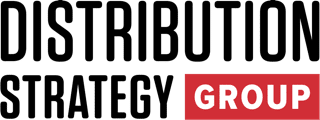Implementing a new enterprise resource planning (ERP) system is a significant investment, and securing buy-in often hinges on showing a clear return on investment (ROI). Highlighting the generic advantages of modern ERP solutions, such as improved security or enhanced workflows, is not enough.
Decision-makers, particularly CFOs, must see how the technology will address specific business challenges and deliver measurable results. When presenting your case, prove how the ERP will deliver value in ways that matter most.
- Identify the pain points.
- Map your ERP features to the business outcomes you want.
- Outline the risks of keeping your legacy system.
Step 1: Understand where ROI will come from.
Start by identifying the pain points your distribution business faces. These typically fall into three broad categories:
Efficiency: Modern ERP systems automate and simplify time-consuming processes. They reduce manual workloads so employees can focus on higher-value tasks, boosting productivity and morale. Here are some examples of pain points that, if solved, can lead to measurable ROI:
- Are your employees bogged down with repetitive tasks, leading to burnout?
- Are you experiencing order processing delays, which create bottlenecks?
- Do fragmented systems force your team to manage disconnected silos, increasing the chances of errors?
Data and Actionable Insights: Distributors need access to real-time data and artificial intelligence (AI)-powered analytics. These enable better forecasting, optimized pricing strategies and more effective promotions. The insights you’ll gain will lead to stronger decision-making and a competitive advantage. Examples of pains include:
- Are data silos preventing proactive and informed decision-making?
- Is data stale or incorrect, leading to inefficiencies and flawed forecasts?
- Is your team wasting time sifting through large volumes of data without getting the insights they need?
Inventory Management: The right ERP solution can enhance inventory tracking, improve demand forecasting and provide real-time supply chain visibility. Ultimately, the right ERP can smooth operations. This positively affects both customer and employee satisfaction. Examples of pains in this category include:
- Are you tying up capital by overstocking your shelves?
- Are you frustrating customers or even losing sales due to stockouts?
- Is your bottom line shrinking due to inefficient warehouse operations?
Step 2: Link benefits to business outcomes.
Once you’ve pinpointed your organization’s pain points, focus on the benefits of addressing these challenges. Use the following questions to frame the discussion:
- Will the ERP increase revenue? For example, customer insights can uncover new opportunities and ensure you’re following up on current ones.
- Will it reduce costs? For example, if you experience fewer stockouts, you’ll save on emergency orders while increasing customer satisfaction.
- Will it mitigate specific business risks? In some segments, compliance is a top concern. The reporting and tracking features in modern ERPs make this easier.
Remember that different stakeholders care about different things. For example:
- CFOs: Cost and ROI are top of mind for CFOs, who want data to back it up.
- VP of Sales: Will the system open new opportunities for growth and release the sales team to focus on what they do best?
- IT: Your tech team will want a case for integration and system security.
- Employees: Your team probably cares most that the new system is user-friendly and will make their jobs easier – not more complicated.
Step 3: Understand the costs of staying put.
It’s not just about the benefits you will receive. It’s about the cost of being held back. Hanging on to your existing system may hold a negative ROI due to manual workarounds (lost time), inability to scale with growth (lost opportunities), security vulnerabilities (downtime), poor employee experience (higher turnover) and a poor customer experience (lost revenue).
The right ERP doesn’t just fix today’s problems — it equips your organization to thrive in the face of tomorrow’s challenges. It’s time to turn the conversation from “Why now?” to “How soon can we start?”
Jon Byrd is an experienced enterprise sales executive with Sikich with a demonstrated history of working in the accounting and supply chain industries. He guides clients in Microsoft Dynamics 365 Finance and Supply Chain Management implementations to support an efficient, practical and sustainable distribution operation. Skilled in business process, sales, partner management, Customer Relationship Management (CRM) and channel sales, he has a Business Administration degree focused on Business from Kennesaw State University - Michael J. Coles College of Business.


2 thoughts on “How to Justify an ERP Investment: Get Specific”
Excellent article! Very informative.
Excellent article. Very concise and practical.